Test system and measurement methods
We have already described the test system and the methodology in the basic article "How We Test Graphics Cards" in detail and therefore, for the sake of simplicity, only refer to this detailed Description. So if you want to read everything again, you are welcome to do so.
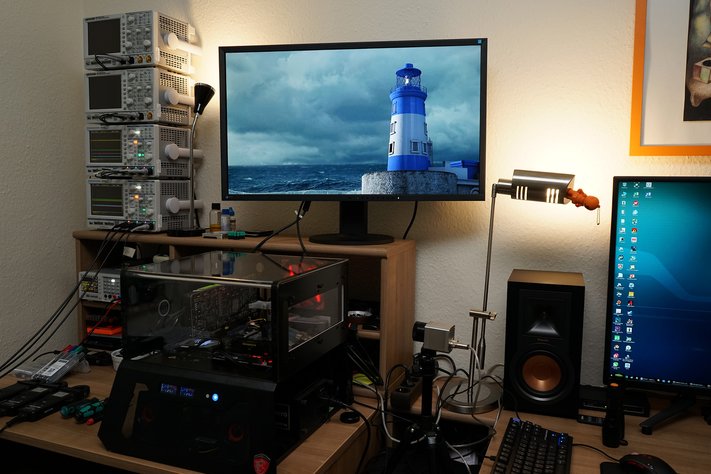
If you are interested, the summary in table form quickly provides a brief overview:
| Test systems and measuring rooms | |
|---|---|
| Hardware: |
Intel Core i7-6900K -4.3GHz MSI X99S XPower Gaming Titanium G.Skill TridentZ DDR4 3600 1x 1 TByte Toshiba OCZ RD400 (M.2, System SSD) 2x 960 GByte Toshiba OCZ TR150 (Storage, Images) Be Quiet Dark Power Pro 11, 850-watt power supply |
| Cooling: |
Alphacool Ice Block XPX, VPP655, 360 Radiator 5x Be Quiet! Silent Wings 3 PWM |
| Housing: |
Lian Li PC-T70 with expansion kit and modifications Open Benchtable |
| Monitor: | Eizo EV3237-BK |
| Thermography: |
Optris PI640, infrared camera PI Connect evaluation software with profiles |
| Operating system | Windows 10 Pro (Creators Update, all updates) Radeon Software Adrenaline (17.12.2, status December 2017) |
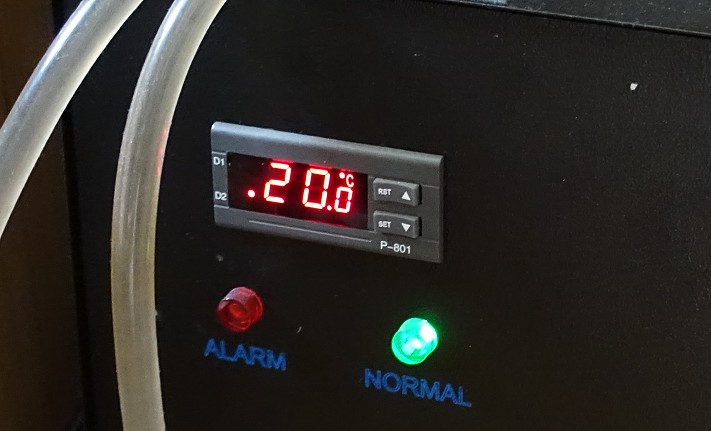 How cold is cold? We force the Chiller to supply us with consistently constant temperatures of the coolant, so that we do not have to go over inaccurate deltas, but can use real, measured temperatures. Of course, we buy this luxury here in the laboratory with a certain noise of the large compressor, but why are there good headsets?
How cold is cold? We force the Chiller to supply us with consistently constant temperatures of the coolant, so that we do not have to go over inaccurate deltas, but can use real, measured temperatures. Of course, we buy this luxury here in the laboratory with a certain noise of the large compressor, but why are there good headsets?
But back to the test setup. We do not use the optical celebration of the RGB firing, because Christmas is still a long way off and we want to know first and foremost how the radiator performs and not how it shines.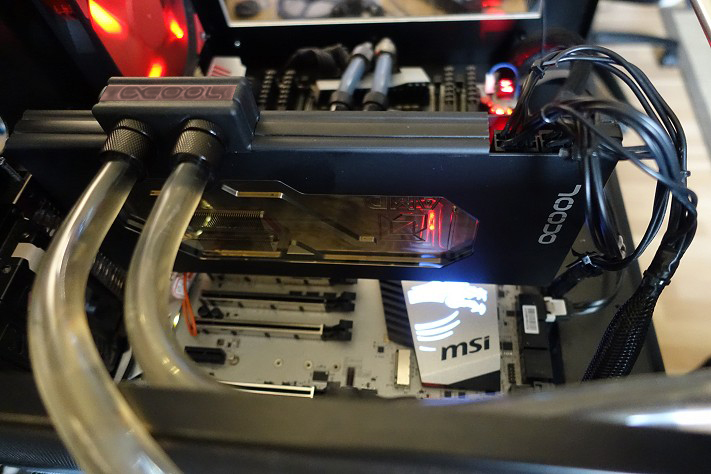
Measurement results with and without backplate
This time we only use the values from the sensor loop, because both the IR35217 from International Rectifier (a dual output digital multi-phase controller, which is used as a PWM controller for the voltage converters) (a dual output digital multi-phase controller that contains both the six phases for the GPU and a can provide another phase for memory), as well as the voltage converter HEXFETs (IRF6811 on the high, as well as an IRF6894 on the low-side) of the same manufacturer provide as sensor return value the respective peak values of the ranges VDDC (GPU) and MVDD (memory).
First of all, we see that the difference between operating with and without a backplate always remains below 2 Kelvin as a delta. Since the read-out temperatures of the voltage converters inside the HEXFETs are already quite low and those at the back of the board are even significantly lower, the cooling improvement is rather in the shadow range of possible measuring tolerances. Optics don't cool down, even the fattest spoiler doesn't help.
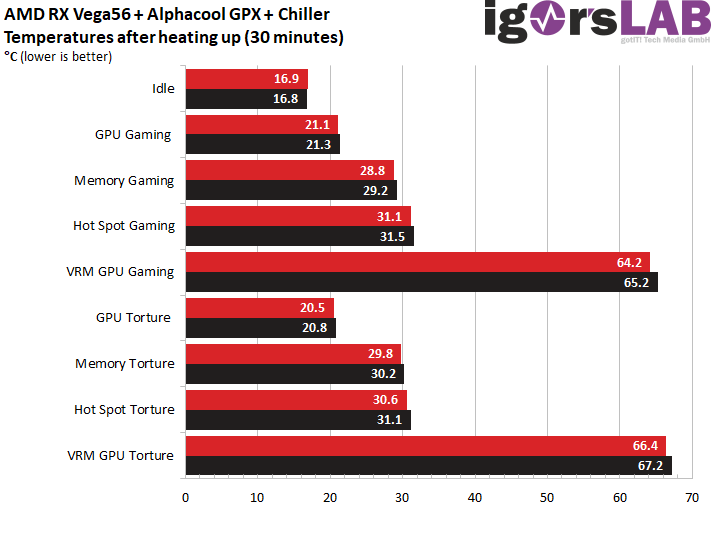
Without a backplate, the temperatures on the back of the board can also be measured very well without contact. The only thing that still glows now are the six IR3598, the doubler chips, which then control the 12 control circuits from the six phases. However, even here, even in point temperatures up to 110°C would not be technically a problem. However, the measured 80°C to 82°C at the top is not something that would have to be cooled away in extra panic. Alphacool does this anyway. Preventive.
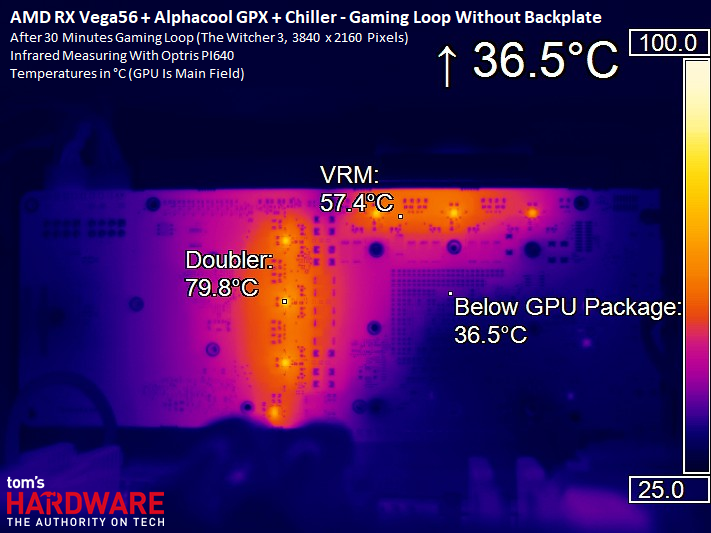
The back under the voltage converter HEXFETs will be warm to a maximum of between 57°C and 59°C. You can live with that, too. The almost 37°C below the package results from the power supply via the many traces in the multi-layer board from the direction of the entire voltage converter.
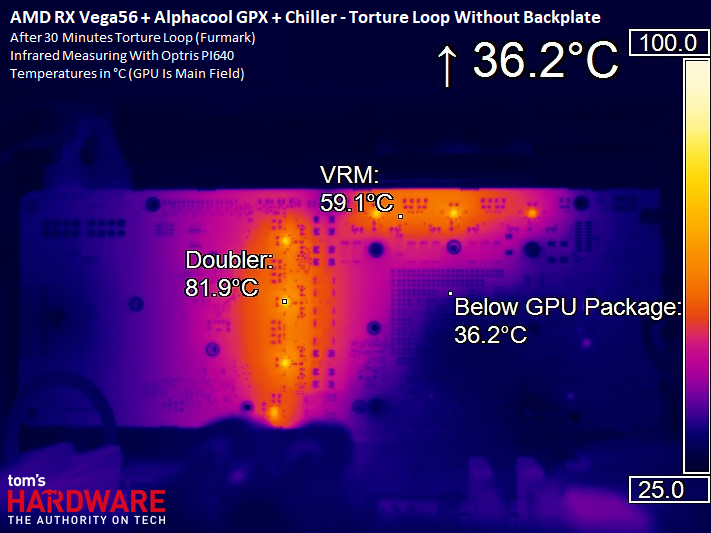
We see very nicely when measuring in the same places with backplate that there are no real hotspots, but that the backplate heats up very evenly.
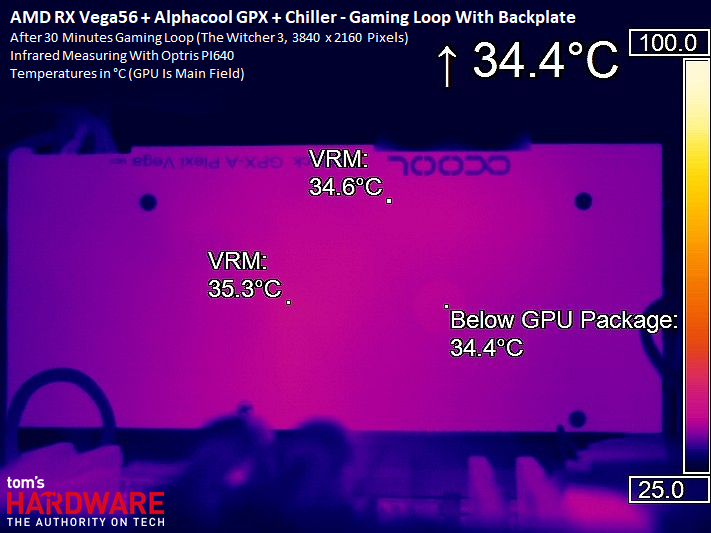
This also applies to the stress test, where the voltage converters and doublers are challenged slightly higher from the house.
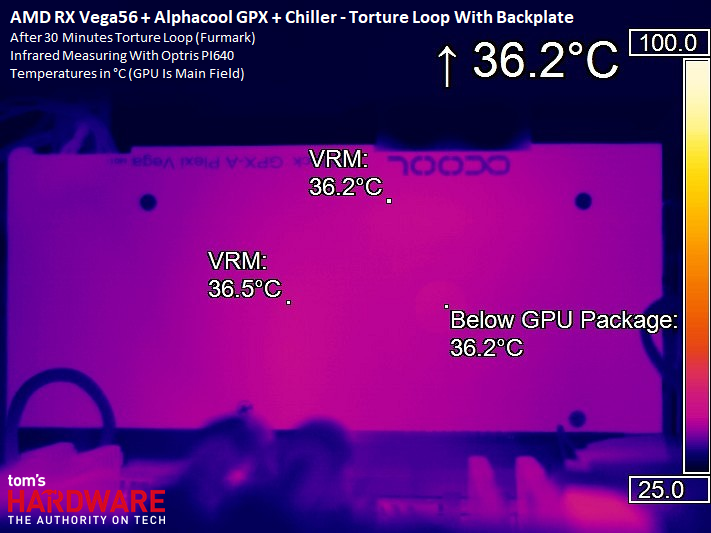
Summary and conclusion
Physics has not been able to reinvent Alphacool with the ice block GPX, so there will probably be no Nobel Prize. But in return, you have not let anything be smothered or even burned, which results in the overall picture of a rather unobtrusive, but also pleasing water cooler, which deliberately dispenses with optical pirouettes, one excludes the LED light chain sometimes gallantly.
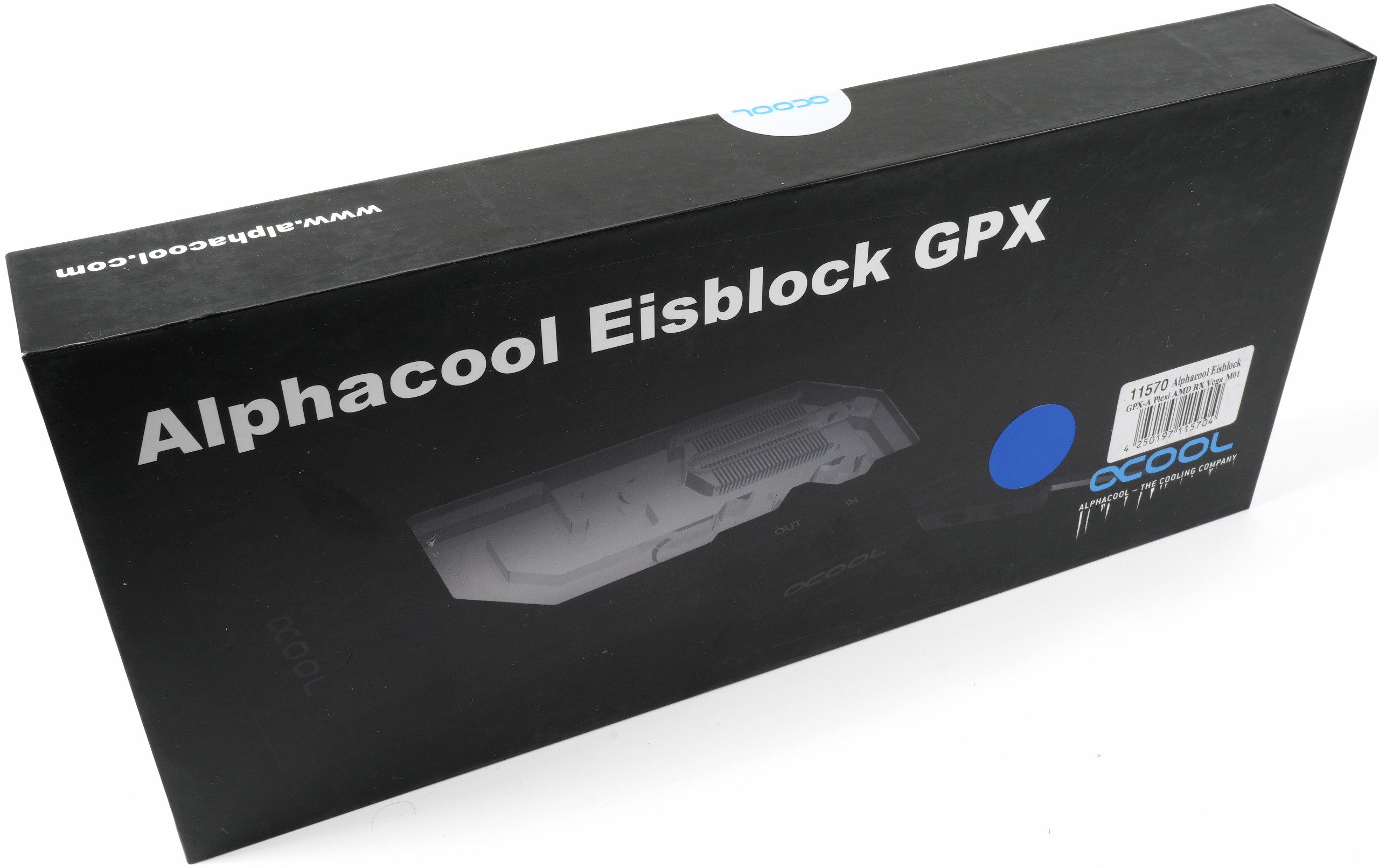
You can live with it well, but with water cooling usually the taste of the buyers counts rather, less reason and or a distinctly rational thinking. Here the ice block GPX will have to prove itself, because design or non-being are very subjectively perceived components. And so in the end the customer will probably not vote with the brain or the feet, but with the eyes. So let's see how the part will eventually sell. In any case, we do not see any technical reason for not doing so, on the contrary. The card is still freezing and is currently on the heating for drying.





















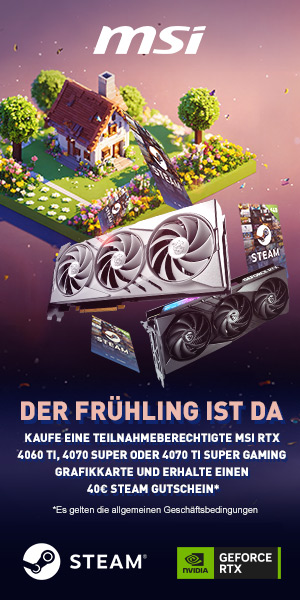











Kommentieren